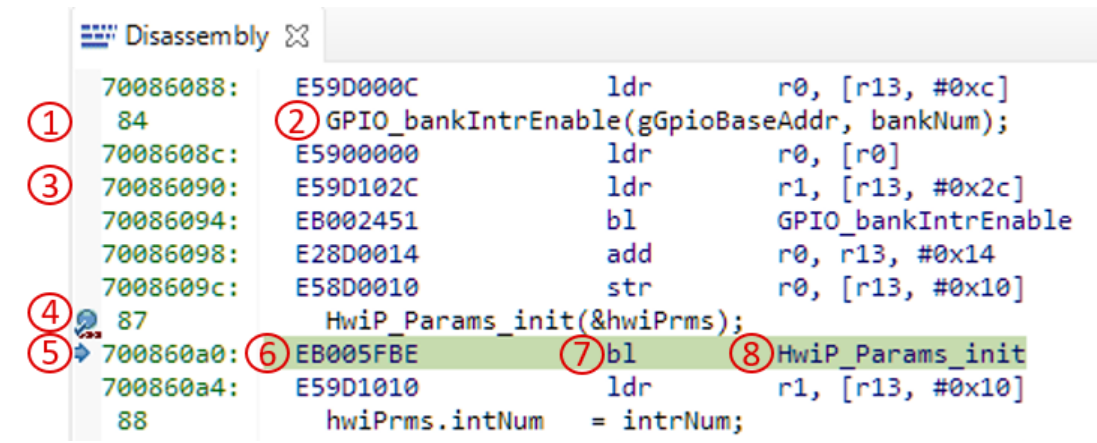SPRAD28 October 2022 AM2431 , AM2432 , AM2434 , AM2631 , AM2631-Q1 , AM2632 , AM2632-Q1 , AM2634 , AM2634-Q1 , AM263P2-Q1 , AM263P4 , AM263P4-Q1 , AM26C31 , AM26C31-EP , AM26C31M , AM26C32 , AM26C32-EP , AM26C32C , AM26C32M , AM26LS31 , AM26LS31M , AM26LS32A , AM26LS32AC , AM26LS32AM , AM26LS33A , AM26LS33A-SP , AM26LS33AM , AM26LV31 , AM26LV31E , AM26LV31E-EP , AM26LV32 , AM26LV32E , AM26LV32E-EP , AM26S10 , AM2732 , AM2732-Q1
- Abstract
- Trademarks
- 1 Building for Debug
- 2 Code Composer Studio Stop-Mode Debugging
- 3 Debug Logging
- 4 Multi-Core Debug
- 5 Debugging Arm Cortex-R5 Exceptions
- 6 Debugging Arm Cortex-M4 Exceptions
- 7 Debugging Memory
- 8 Debugging Boot
- 9 Debugging Real-Time Control Loops
- 10E2E Support Forums
2.4 Inspecting Disassembly
This section covers how to use the CCS Disassembly view to get further insight into your running software.
The CPU opcodes of the software executing on the target can be viewed in the Disassembly window (View → Disassembly) of the core. Assembly step into and step over buttons in the debug window can be used to step through the disassembly.

The Disassembly view contains several points of information:
- Line numbers of the source file in context
- C source code at the line number
- Program addresses
- Breakpoint indicators
- Program Counter - the next instruction to be executed
- Opcodes in hex format
- Disassembled instructions
- If the opcode references a function or variable, their names are also shown